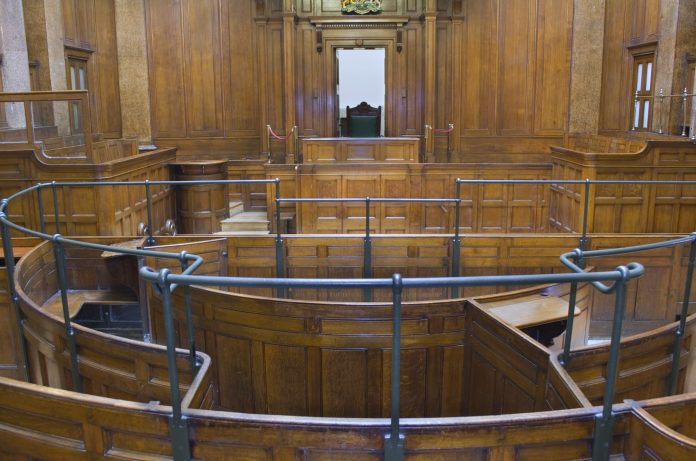In April 2020, the EHRC found that people with disabilities may struggle with pandemic adjustments to legal proceedings – but just how accessible were Britain’s courthouses, before COVID-19?
In December, the European Commission launched a New Pact on Migration and Asylum. A key issue was the language and lack of support for people with disabilities and mental health conditions, a startling omission in a policy proposal that impacts thousands of people.
According to data from the Office for National Statistics (ONS), people with disabilities in the UK reported twice as bad mental health than other people, as a mixed result of loneliness, feelings of burdening others and feeling unable to talk about their worries to someone.
“We are just beginning to understand the impact of loneliness on the brain,” said Danilo Bzdok, a researcher at The Neuro and the Quebec Artificial Intelligence Institute.
There are an estimated 13.7 million people with disabilities in the UK.
David Ainslie, Principal Research Officer at the ONS, said: “A particular issue for disabled people was the impact on their health among those who were not receiving the same level of medical care as they had before the pandemic.”
In addition to lacking the necessary level of care, people with disabilities are also generally more vulnerable to the effects of COVID-19 – putting them in an even more tense situation, as lockdowns continue and case numbers rise in the UK.
The lifelong inaccessibility of old buildings
Entering a courthouse is a similarly tense situation. For people with disabilities, the reason behind the visit is often medical neglect or discrimination – with the hope of justice. Westminster Hall is the oldest courthouse in Britain, dating back to 1097. While the old architecture of 444 courthouses across the country is starkly beautiful, these buildings also symbolise inaccessibility.
According to new research by legal firm Bolt Burdon Kemp, only 2% of courthouses in Britain are fully accessible. If a person cannot get into the room, how can they have a seat at the table?
That percentage translates to a total of 8 courthouses:
- Aberystwyth Justice Centre (Wales)
- Leeds Combined Court Centre (North East England)
- Manchester Civil Justice Centre (Civil and Family Courts) (North West England)
- Plymouth Combined Court (South West England)
- Taunton Magistrates’ Court, Tribunals and Family Hearing Centre (South West England)
- Weston-Super-Mare County Court and Family Court (South West England)
- Wigan and Leigh Magistrates’ Court (North West England)
- Worcester Combined Court (Midlands)
What does it take to be a fully accessible building?
- Disabled parking
- Accessible toilets
- Lifts
- Hearing loop systems
- Interview rooms
- Baby changing facilities
- Video conference facilities
- Wireless internet access
- Witness support facilities
- And offering wheelchair access and allowing assistant dogs into the building
The firm commented: “It’s important for the government, as well as local councils, to make a concerted, combined effort to ensure all courthouses are adapted for people with accessibility issues.
“When over three-quarters of courthouses are not fully accessible, there’s a real danger that justice may be being denied – or made harder to achieve – for people with accessibility issues.”
Only 22% of courthouses have witness support
Taking an issue to court can take up a lot of emotional and mental energy, which can be exacting if someone is already drained. It is surprising to find that only 22% of courthouses offer witness support or quiet rooms, for those with mental health issues. That quiet moment can be the decisive moment that fuels someone to continue their fight. When it comes to physical disability, the research found that over three-quarters of courthouses are inaccessible to wheelchair users. That’s 84% of the buildings.
Since the 1995 Disability discrimination act, wheelchair users should have access to all businesses in the UK. While a courtroom is not necessarily a place of business, it seems unusual for such a vital service under the control of the UK Government, not to take the advice it gives out to others.
While COVID-19 makes it impossible for people to attend court in person, perhaps this is a good time to reconsider how these buildings are designed. Until that point of momentous change arrives, Bolt Burden Kemp have created a guide for legal professionals on how to work around inaccessibility with their clients.




![Europe’s housing crisis: A fundamental social right under pressure Run-down appartment building in southeast Europe set before a moody evening sky. High dynamic range photo. Please see my related collections... [url=search/lightbox/7431206][img]http://i161.photobucket.com/albums/t218/dave9296/Lightbox_Vetta.jpg[/img][/url]](https://www.openaccessgovernment.org/wp-content/uploads/2025/04/iStock-108309610-218x150.jpg)






